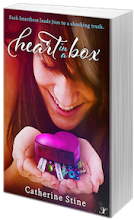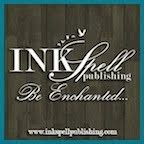What distinguishes a YA dystopian novel from a YA sci-fi novel? And is there a difference between hard-core genre sci-fi, and creating a futuristic world, conceivable by scientific standards? What is the prevailing mood towards these genres?
Dystopias are almost always cautionary tales—utopias that have soured—and tropes for real life scary cultural trends such as fascism, climate change and technology run amok. Interestingly enough, the ancient translation of the word utopia is “no place”, which suggests that a utopia cannot actually exist.
A classic example of a dystopia that almost all high-school students read—and end up loving—is George Orwell’s 1984. Written in 1948, Orwell warned people of the dangers of totalitarian government a la Stalin’s Russia, and the loss of one’s personal independence in a repressive style of communism. Control in 1984 is obtained through mass brainwashing, and Big Brother’s ultimate desire is to have a person die loving the Party; this, so that there’s no danger of the “vaporized unperson” becoming a martyr and fomenting rebellion. Does Big Brother succeed? Ah! For the answer to that question, you must read Orwell’s very clever afterward.
Some current YA dystopias are THE HUNGER GAMES by Suzanne Collins, set in an alternate USA, where teens fight to the death for the richest district’s entertainment, and BIRTHMARKED by Caragh O’Brien, a world where life is reduced to helping birth babies for the exclusive set inside the Enclave by “Unlake” Michigan.
So, what about YA sci-fi? I believe it’s slowly but confidently creeping into the YA canon, despite some editors fears that teens won’t “get” the science behind the stories, and therefore must be limited to YA fantasy where there is no steep learning curve. Quite the contrary, I think teens are itching for this kind of concrete, yet visionary material. After all, the classic authors such as Sir Arthur C. Clarke ended up inventing satellite technology. I mean, how cool is that?! In Clarke’s own inspiring words: "Any sufficiently advanced technology is indistinguishable from magic." Who wouldn’t want to explore the magic of the real world?
There’s no need to fear that pages of details will overrun the genre on how to build a robot from scratch, or power a rocket. No current author wants to mimic the old-school adult genre. So, there’s no need for authors writing YA sci-fi to hide it under names like “futuristic thriller”.
Current examples of YA sci-fi run the gamut from Cory Doctorow’s LITTLE BROTHER, a sort of cyberfest for Internet geeks (And major nod to Orwell’s Big Brother), and THE ADORATION OF JENNA FOX by Mary Pearson, which explores the ethics of using new science in medicine, and the nature of the soul.
And now, onto the difference between YA dystopia and Post-apocalyptic fiction… for this discussion, I will ferry you onto the excellent post by YA Highway:
http://www.yahighway.com/2010/06/dystopian-and-apocalypse-whats.html
But before running off, you may want to answer this challenging question: Is S.A. Bodeen’s THE COMPOUND post-apocalyptic, sci-fi, or simply a thriller?















